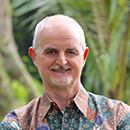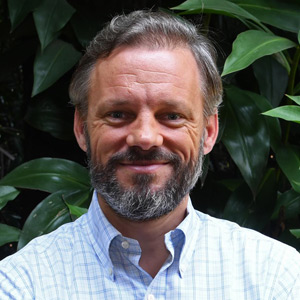
Keeping Andean and Amazonian forest in equilibria is crucial to avoiding crossing ecological tipping points for the biomes in the region. The ‘megafund’ for the conservation of tropical forests proposed by President Lula of Brazil at COP28 is a huge opportunity to finally get things right, and leverage the myriad of ‘forest connections’ on which we all depend.
Drought has gripped the Amazon Basin this year, with the lowest water levels in a century near Manaus, Brazil, and unusually high water temperatures – suspected to be the cause of more than 100 dead dolphins in the remote Lake Tefé. This extreme drought is a sobering picture of what could lie ahead for the world’s largest tropical forest if global temperatures continue to rise.
The current drought is an example of a cascade of consequences stemming from a combination of natural weather patterns, global warming, deforestation, and human activity.
More than 20 percent of the Brazilian Amazon has already been deforested, and about a third of the remaining forest is highly degraded, and more susceptible to fire. Deforestation, especially in the so-called ‘arc of deforestation’ or ‘arc of fire’ – which stretches from south-east Maranhão in Brazil to Northern Bolivia – significantly raises local air temperature over distances of as much as 100 kilometres. Over the past four decades, the combination of rising temperatures and deforestation has increased the length of the dry season, by as much as a month in the southern part of the basin – which also increases the length of the fire season.
The combination of rising global temperatures, reduced rainfall, higher local temperatures due to clearing forest for pastures or crops, and road building, raises the risk that parts of the remaining forest could pass an ecological ‘tipping point‘, progressively become drier, and turn into a savannah, or something akin to drier biomes that exist in Brazil such as the Cerrado. A drier forest not only burns more readily but also releases less moisture, further reducing rainfall. Higher temperatures over land can affect smallholder farmers’ crop production, incentivizing further encroachment into forests: a vicious circle.
This gives added urgency to the 2023 United Nations Climate Change Conference, or COP28, taking place from November 30 to December 12 in Dubai, UAE. It is crucial that delegates understand what is at stake in the Amazon Basin — and the support that is needed to stop deforestation and protect the livelihoods of the region’s inhabitants, especially Indigenous peoples and traditional communities. We all need to understand how and why we depend on the Amazon, in many ways, even if we live far away from it. Protecting the Amazon is protecting all of us.
Take the example of the water cycle that the Amazon Forest triggers over the entire South American continent, with “flying rivers” picking up water vapour recycled from trees and carrying moisture over thousands of kilometers, deep into the continent and far from oceanic shores, providing much-needed water for rain-fed corn and soy in southern Brazil and northern Argentina. The Amazon Forest is the natural irrigation system of South America’s bread basket.
There is no doubt that we are putting the Amazon, and all the equilibria it nurtures, at risk. There is also no doubt that it is within our power to slow this change and reverse its course.
At COP28, President Luis Ignacio Lula da Silva of Brazil has proposed the creation of a new USD 250 billion mechanism to conserve the world’s tropical rainforests.
We call here for a two-way approach.
First, target the standing forests, and the Indigenous people and local communities that live in these forests, who have been recognized for a long time as the best weapon against fire and deforestation, and as the guardians of a tremendous reservoir of biodiversity. There is much to do in terms of restoring standing, but degraded, forests, and to leverage the potential of “standing forests” for the bioeconomy.
Second, target the farm-forest frontiers of the Amazon, and apply proven land-use models for these ‘buffer’ areas, promoting mosaic landscapes, regenerative agriculture, and agroforestry.
For this, there is a myriad of profitable, diversified production systems generated from local socio-biodiversity – another key component of the bioeconomy – that include elements like indigenous crops, fruit trees, palms, and timber trees. Such systems can act as a “living shields” for areas of intact forests. Agroforests are better fences for protected areas than cattle or soybeans, whilst also providing local populations with greater economic value than extensive, commodity-driven agriculture, and bringing more dietary diversity into local, regional, and national food systems, resulting in better nutrition.
They also enable better temperature regulation and water cycling. This was exemplified during this year’s three-month period without rain in Tomé-Açu, in Brazil’s Pará State – where CIFOR-ICRAF is supporting the implementation of agroforestry systems – and where cocoa trees under agroforestry cover survived the drought, whilst many of their conventional ‘full sun’ counterparts dried out and died.
Lula’s ‘megafund’ is an opportunity to value and protect the critical equilibria that standing forests can ensure because of all the interconnections that originate from them: for water, for more diverse food and better nutrition, and for biodiversity – among many other things. Each of these ‘forest connections’, if valued properly and integrated into the fund, can act as additional reasons to protect the Amazon itself.
Too often, conservation, forestry, and agricultural policies are designed in isolation from each other, making their implementation conflictual. There is an opportunity with the new fund not only to bankroll the protection of forests, but to protect all of us that depend on them: first and foremost the local communities and Indigenous peoples that live within them, but also each one of us that benefits at a distance – often unknowingly, but crucially – from forest connections.
Robert Nasi is the chief operating officer of CIFOR-ICRAF and director general of CIFOR. Vincent Gitz is CIFOR-ICRAF’s programme director and platforms focal point for Latin America.
We want you to share Forests News content, which is licensed under Creative Commons Attribution-NonCommercial-ShareAlike 4.0 International (CC BY-NC-SA 4.0). This means you are free to redistribute our material for non-commercial purposes. All we ask is that you give Forests News appropriate credit and link to the original Forests News content, indicate if changes were made, and distribute your contributions under the same Creative Commons license. You must notify Forests News if you repost, reprint or reuse our materials by contacting forestsnews@cifor-icraf.org.













